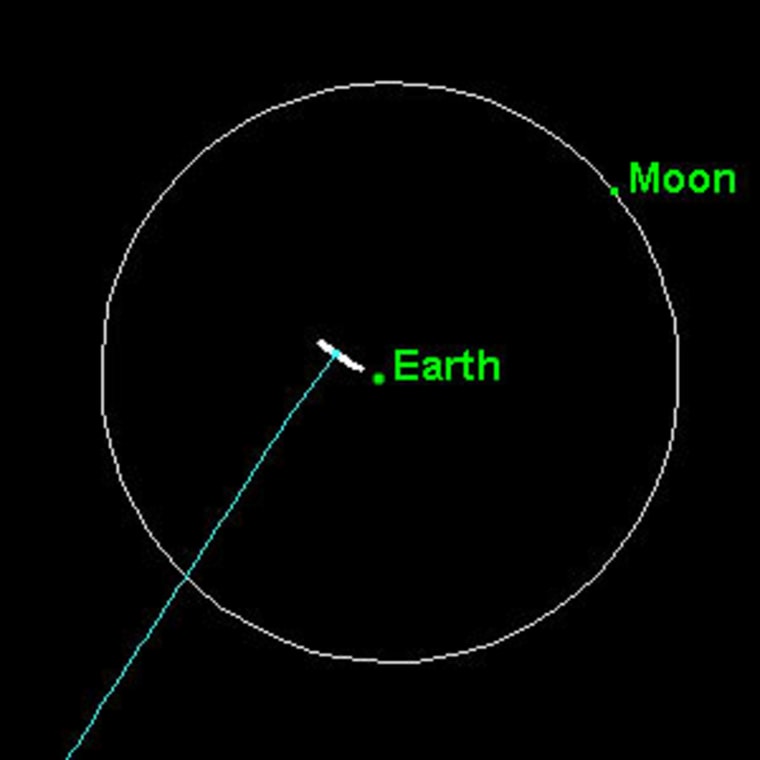After issuing an unprecedented "yellow alert" for a potential cosmic collision, astronomers said further observations showed that a recently discovered asteroid had no chance of hitting Earth in the year 2029.
Monday's announcement, issued by the Near Earth Object Program at NASA's Jet Propulsion Laboratory, capped a high-priority search for data about the space rock, which was discovered in June and designated 2004 MN4.
At one point, astronomers said the uncertainty factor about 2004 MN4 allowed for a 1-in-40 chance of a collision on Friday, April 13, 2029. That led them to give the asteroid a rating of 4 on the 1-to-10 Torino scale that is used to gauge the threats posed by near-Earth asteroids and comets. Until 2004 MN4, no object had been graded higher than 1.
The asteroid is thought to be about 1,400 feet (430 meters) long. That's not large enough to create a mass-extinction event, like the one that scientists say contributed to the demise of the dinosaurs 65 million years ago. But if the asteroid were to hit the wrong place at the wrong time, it could cause a giant tsunami wave or deliver a nuclear-scale blast.
Fortunately, the alert led astronomers to check their archives for images of the asteroid that might have gone unnoticed at the time. Guided by the latest data about 2004 MN4's orbit, the Arizona-based Spacewatch Project spotted the rock on five images made back on March 15, said Donald Yeomans, manager of the Near Earth Object Program.
"When we added those five observations, the impact probability in 2029 went to zero," Yeomans told MSNBC.com.
The 2029 event is still worthy of note, however, because it could rank among Earth's closest encounters with a potentially hazardous asteroid observed in modern times. Yeoman said the minimum distance would be 10 to 12 Earth radii — which translates to 40,000 to 48,000 miles, or 64,000 to 77,000 kilometers.
"It's going to be quite impressive," Yeomans said.
The encounter is so close that Earth's gravitational pull will bend the asteroid's orbit, adding uncertainty to the orbital calculations beyond 2029.
"However, our current risk analysis for 2004 MN4 indicates that no subsequent Earth encounters in the 21st century are of any concern," Yeomans and his colleague, Paul Chodas, said in the advisory sounding the all-clear.
